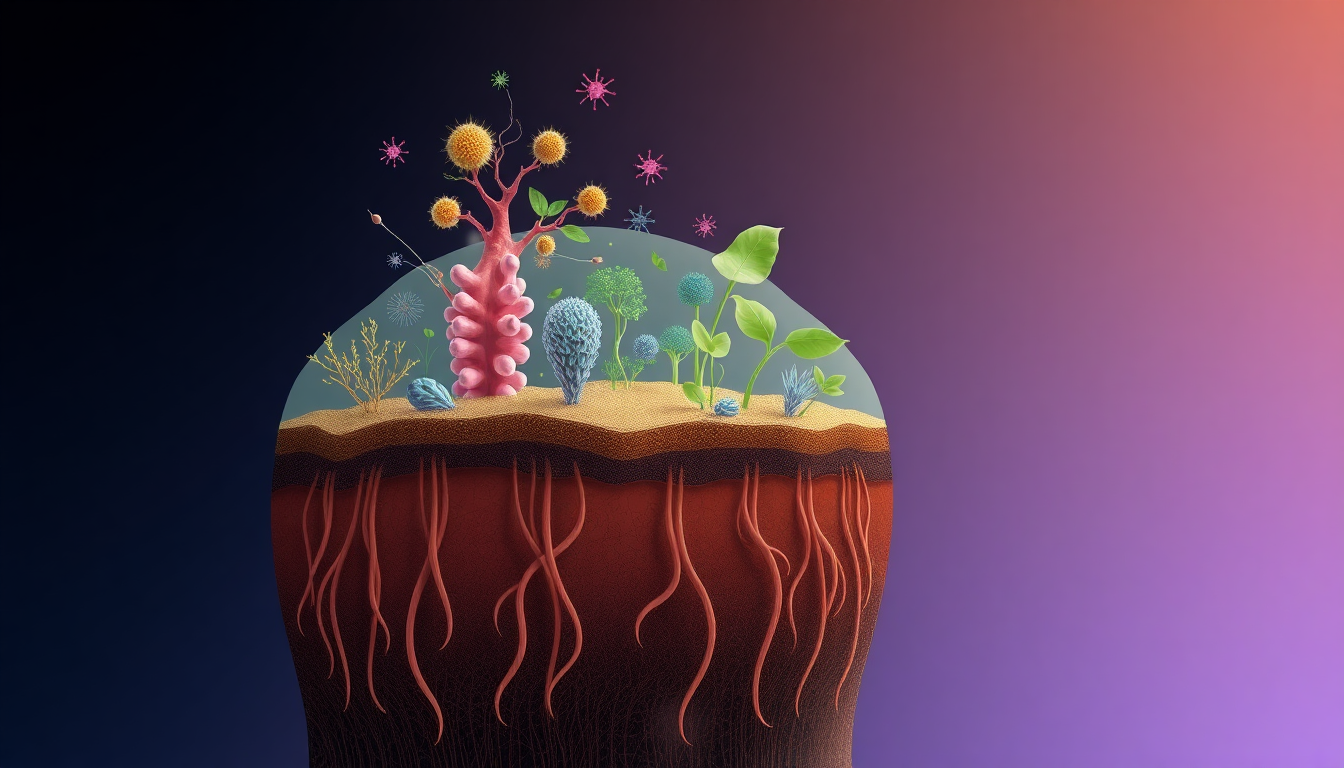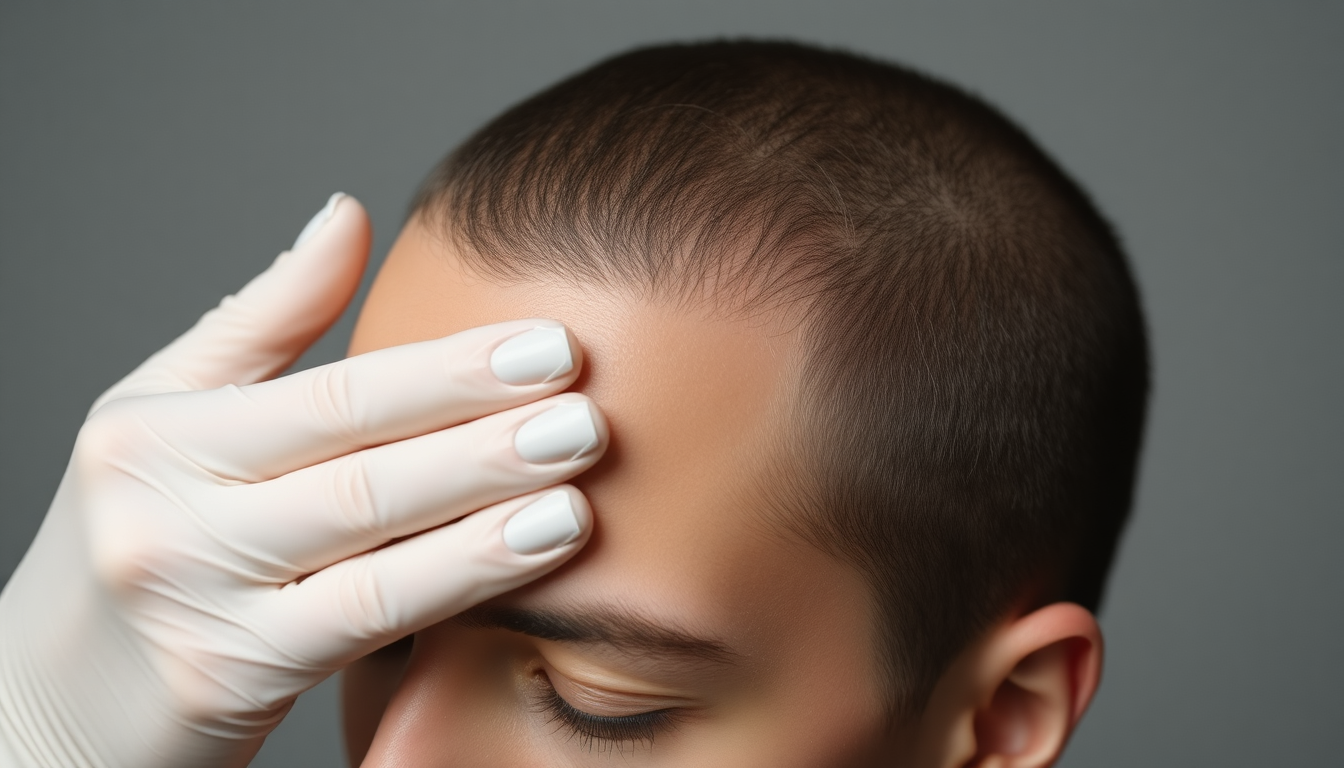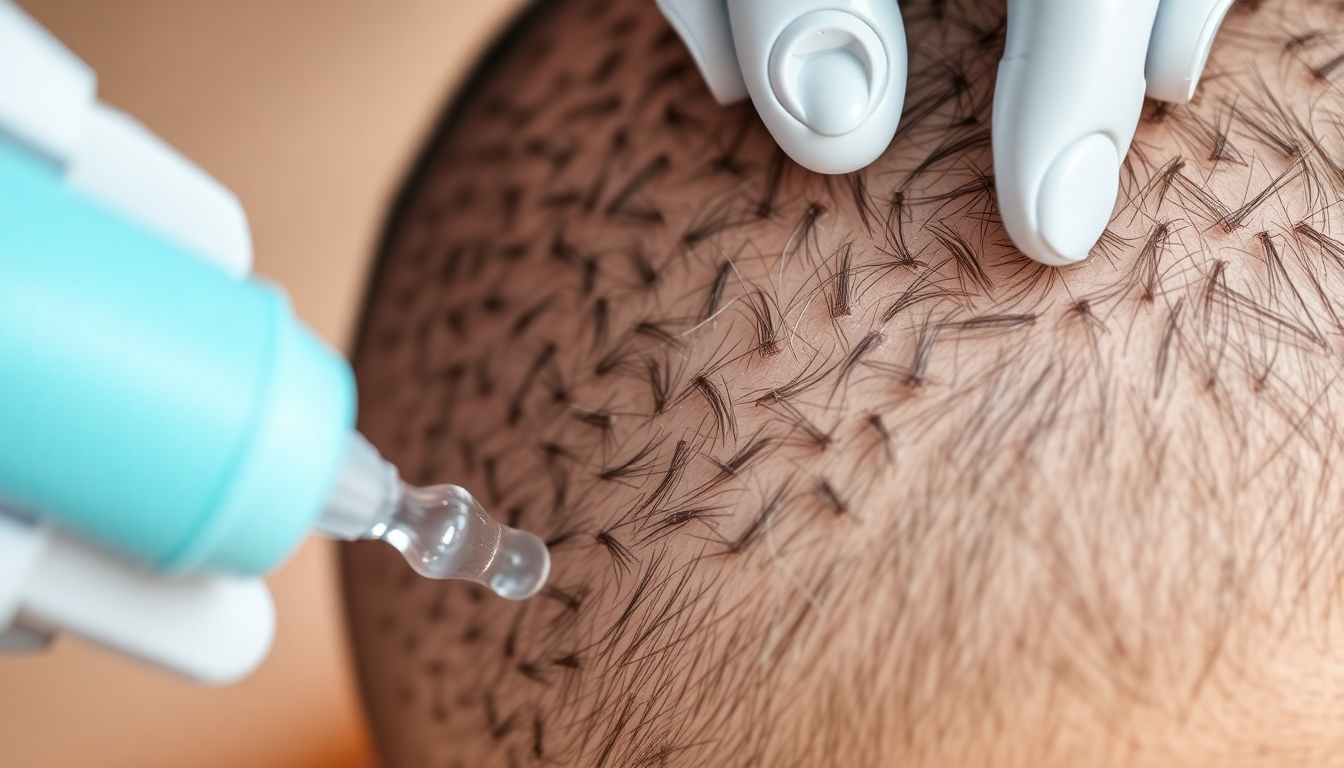Introduction: The case for a personalized Scalp Compatibility Score
Hair density goals are personal and multidimensional. Two people with similar hair loss patterns can respond very differently to the same product. The Scalp Compatibility Score (SCS) is a practical, evidence-aware framework that helps you compare peptide serums, prebiotic scalp treatments and at-home devices against your unique scalp biology, tolerance and lifestyle. In 2025, with more targeted actives and consumer devices on the market, an SCS-focused approach reduces wasted spend and accelerates visible improvements.
What this guide covers
- How to build a detailed scalp baseline profile you can re-evaluate over time.
- Scientifically grounded overviews of peptides, prebiotics and at-home devices and how they influence hair density.
- A step-by-step SCS calculation, practical templates, real-world examples and a 3–6 month plan you can follow.
- Selection tips and a checklist to choose formulations and devices that fit your scalp and routine.
Scalp biology 101: The foundation of compatibility
Your scalp is an ecosystem: epidermis, sebaceous glands, hair follicles, immune cells and trillions of microbes. Key concepts for SCS:
- Follicular miniaturization: a central driver of density loss; some actives aim to slow or reverse it.
- Inflammation: low-level chronic inflammation can shorten the hair growth phase and increase shedding.
- Sebum balance: oily scalps alter topical absorption and can interact with vehicle choice (oil vs. water-based serums).
- Microbiome: an imbalanced microbial community correlates with dandruff, itch and an unfavorable follicle environment.
Deep dive: What peptides do and how to evaluate them
Peptides are short amino-acid sequences that can modulate cellular signaling. In hair care, peptides claim to:
- Support follicle extracellular matrix and improve anchor strength (reducing breakage).
- Signal dermal papilla cells to produce factors linked to hair growth.
- Enhance antioxidant responses around follicles in some formulations.
How to evaluate a peptide serum for SCS:
- Ingredient specificity: peptides like copper peptides (GHK-Cu) and certain palmitoyl peptides have more published literature than generic 'peptide blend' claims.
- Vehicle and penetration: look for low-molecular-weight carriers, alcohol content, or delivery systems (liposomes) that support scalp absorption, especially on oily scalps.
- Clinical data: randomized trials or at least pilot studies add confidence. If a brand shares study protocols and endpoints, that raises mechanism suitability and trust.
- Tolerability: peptides are often gentle, but vehicles, preservatives and fragrance can drive irritation.
Deep dive: Prebiotic scalp treatments and the microbiome
Prebiotics supply nutrients that selectively feed beneficial microbes, helping rebalance a disturbed scalp microbiome. A healthier microbiome can reduce inflammation and barrier disruption, improving the follicle's microenvironment.
Key evaluation points for prebiotic treatments in SCS:
- Prebiotic type: inulin, beta-glucans and certain oligosaccharides are commonly used; formulations may combine prebiotics with soothing botanicals.
- Leave-on vs. rinse-off: leave-on tonics and serums provide longer microbiome exposure and typically rate higher on mechanism suitability for long-term scalp health.
- Compatibility: gentleness matters for sensitive or inflamed scalps; fragrance-free and low-preservative options increase the tolerability score.
Deep dive: At-home devices — what works and what to watch for
Popular device categories:
- Low-Level Light Therapy (LLLT) / Red Light: aims to stimulate cellular metabolism and circulation.
- Microneedling (dermarollers, pens): induces controlled micro-injury to stimulate repair pathways and improves topical absorption.
- Scalp massagers and mechanical stimulators: increase blood flow, help exfoliate and can enhance product spread.
Evaluation criteria for device SCS:
- Evidence base: LLLT has multiple clinical studies showing modest density improvements; microneedling shows benefit when combined with topical therapies in several trials.
- Safety for your scalp: avoid aggressive microneedling on inflamed or infected scalps. LED devices are generally safe for most skin types but check for photosensitizing medications.
- Compliance & ergonomics: devices that fit easily into your routine and have clear protocols (session length, frequency) score higher on Practical Fit.
Scalp Compatibility Score (SCS): a detailed scoring system
The SCS uses four weighted domains. Each domain is scored 0–100 then weighted to provide a 0–100 final SCS.
- Scalp Health Match (weight 40%): how well the product/device suits your scalp type, sensitivity and current issues.
- Mechanism Suitability (weight 30%): the degree to which the active or device addresses your specific density problem (miniaturization, circulation, microbiome).
- Safety & Tolerability (weight 15%): likelihood of irritation, known adverse effects and interactions.
- Practical Fit (weight 15%): cost, routine compatibility, maintenance and ease of use.
How to compute: Final SCS = (ScalpHealth*0.4) + (Mechanism*0.3) + (Safety*0.15) + (Practical*0.15).
Practical SCS worksheet (use for 3–5 options)
- Step 1: For each candidate product/device, assign 0–100 for each domain.
- Step 2: Apply weights and calculate the final SCS.
- Step 3: Rank options and choose one primary (SCS ideally >70) and one supportive therapy (SCS 50–70).
Realistic expectations and timelines
Hair cycle biology means measurable changes often require months. Typical timeframes:
- 2–3 months: initial reduction in shedding and improved scalp comfort.
- 3–6 months: early density changes, thicker shafts for some users.
- 6–12 months: clearer density gains if mechanisms are effective and adherence is high.
Plan for iterative evaluation: re-score your options at 12 weeks using objective photos and subjective tolerability.
Case studies: Applying the SCS in real life
Below are anonymized, practical examples to illustrate scoring and decision-making.
Case A: Olivia — oily scalp, early thinning at crown
- Baseline: Oily scalp, mild inflammation, family history of androgenic thinning.
- Candidates: Copper peptide serum (A), prebiotic leave-on tonic (B), LLLT cap (C).
- Scoring (example): A = (Scalp 70, Mech 85, Safety 80, Practical 70) -> SCS 76. B = (Scalp 85, Mech 65, Safety 90, Practical 85) -> SCS 78. C = (Scalp 60, Mech 75, Safety 85, Practical 60) -> SCS 69.
- Plan: Start with prebiotic tonic B as primary to rebalance the oily microbiome and a copper peptide serum A as supportive; LLLT added later if progress stalls.
Case B: David — sensitive, dry scalp and patchy thinning
- Baseline: Dry, reactive scalp with flakiness; hair breakage reported.
- Candidates: Mild peptide serum with emollient vehicle (A), gentle prebiotic balm (B), microneedling (C).
- Scoring (example): A = (Scalp 85, Mech 70, Safety 80, Practical 80) -> SCS 78. B = (Scalp 90, Mech 60, Safety 95, Practical 85) -> SCS 82. C = (Scalp 50, Mech 85, Safety 50, Practical 40) -> SCS 57.
- Plan: Primary = gentle prebiotic balm to calm scalp (higher SCS). Add peptide serum after 4 weeks if improvements plateau. Defer microneedling until scalp is less reactive and under professional guidance.
Designing a 3–6 month personalized hair density plan
Actionable template:
- Week 0: Baseline photos (top, crown, hairline), scalp profile, SCS scoring of candidates.
- Weeks 1–12: Use primary therapy daily/according to instructions; use supportive therapy as scheduled (alternate days or layering as tolerated).
- Week 8: Check-in — photo update and tolerability notes; minor adjustments allowed (reduce frequency if irritation).
- Week 12: Re-score; if SCS-guided primary shows measurable gains, continue for 3 more months. If not, switch to the next-highest SCS option and repeat the cycle.
- Months 4–6: Consider device synergy (e.g., LLLT 3x/week or microneedling every 4–6 weeks under supervision) if tolerated and indicated by SCS.
How to combine treatments safely
- Order of application for layered routines: cleanse → prebiotic tonic/leave-on treatment → peptide serum → sealers or oils (if part of formula).
- Spacing protocols: If using potent actives (retinoids, strong acids), avoid simultaneous microneedling until tolerance is confirmed.
- Patch tests: Apply a small amount of each product behind the ear or on the inner forearm for 48 hours before full scalp use.
- Medical consultation: Seek a dermatologist if you experience rapid shedding, sores, intense redness or if you are on prescription medications.
Product and device selection checklist (printable)
- Clear ingredient list and active concentrations.
- Third-party testing or clinical data shown for the product or its key actives.
- Simple instructions and recommended frequency of use.
- Good return policy or starter sizes to trial tolerance and efficacy.
- Device certifications (CE, FDA clearance where applicable) and clear safety guidance.
Tracking progress: practical metrics
- Photography: consistent lighting and angles, weekly or biweekly.
- Shedding diary: daily shed hair count or subjective scale (0–10) to detect early changes.
- Measured hair counts: for scientific rigor, count hairs shed in 24 hours or perform a small hair pull test under professional guidance.
- Comfort metrics: itch, oiliness, flaking scored weekly to monitor scalp health.
Common pitfalls and how to avoid them
- Switching too fast: give primary therapies at least 12 weeks before judging efficacy unless severe irritation occurs.
- Layering incompatible products: avoid mixing many actives at once; introduce one new item at a time.
- Over-reliance on anecdotes: prioritize products with transparent data, clear ingredients and appropriate SCS for your scalp.
- Ignoring lifestyle factors: nutrition, sleep, stress and medications all affect hair density; treat them as complementary interventions.
Frequently asked questions (FAQ)
- Q: Can I use peptides and prebiotics together? A: Yes—when compatible vehicles and tolerability allow. Use prebiotic tonics first if leave-on, then peptide serums. Patch-test combinations.
- Q: Are at-home devices safe for sensitive scalps? A: LEDs are generally low-risk; microneedling can aggravate sensitive or inflamed scalps and should be used cautiously or under professional supervision.
- Q: How much should I expect to spend? A: Budget for a 3–6 month trial. Higher cost doesn’t always equal better SCS; formulation quality and evidence matter more.
- Q: When should I see a dermatologist? A: Rapid shedding, scarring, severe inflammation, or if topical/OTC approaches fail — consult a clinician early rather than later.
Where to source thoughtful, research-driven formulations
For many readers, convenience and formulation transparency are priorities. Look for brands that publish ingredient lists, pairing guidance and clinical summaries. If you want a curated line with peptide serums and prebiotic scalp treatments designed for compatibility, consider browsing targeted ranges like those at peptide hair serum from Eelhoe Cosmetics and their prebiotic scalp treatment collection. These product pages can help you compare concentrations and vehicle types as you compute your SCS.
Illustrations and visual aids to include in your plan
Use the following images as templates for your personal folder (replace placeholders with your own photos and product shots):
Putting it all together: a sample 6-month roadmap
Month 0: Evaluate and score 3–5 options. Choose primary (SCS >70) and supportive (50–70).
- Months 1–3: Daily use of primary; support with one complementary product. Track photos and shedding weekly.
- Months 3–4: Re-score and assess; if progress is positive but slow, continue. If no improvement and SCS was <70, pivot to highest-scoring alternative.
- Months 4–6: Add a device if indicated by SCS (e.g., LLLT 3x/week) and continue monitoring. Consider professional interventions if plateau persists.
Final checklist before you start
- Completed scalp baseline and photos.
- Scored at least 3 options with the SCS worksheet.
- Purchased travel/starter sizes or a starter bundle to reduce upfront cost.
- Set calendar reminders for product/device schedule and photo checkpoints.
Conclusion & invitation
A Scalp Compatibility Score helps you navigate the crowded landscape of peptide serums, prebiotic scalp treatments and at-home devices by aligning choices with your unique scalp biology and routine. Use the SCS methodically: profile, score, choose, track and iterate. That approach converts scattered experiments into a coherent plan with measurable milestones.
To make the first step easier, explore targeted formulations and starter bundles that simplify compatibility testing. Visit Eelhoe Cosmetics for research-forward peptide hair serum options and gentle prebiotic scalp treatments designed for real-world tolerability. Consider trying a curated starter kit to test your SCS in practice and build a personalized hair density plan backed by consistent tracking.
Disclaimer: This article is for informational purposes and does not replace medical advice. For persistent or severe hair loss, scalp disease, or if you are taking prescription medications, consult a qualified healthcare professional before starting new treatments or devices.




Leave a comment
All comments are moderated before being published.
Este site está protegido pela Política de privacidade da hCaptcha e da hCaptcha e aplicam-se os Termos de serviço das mesmas.